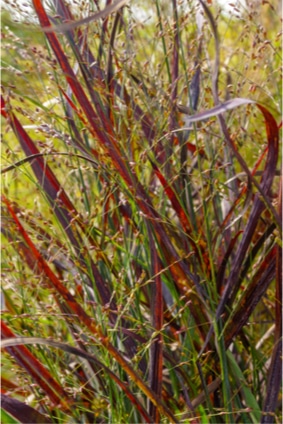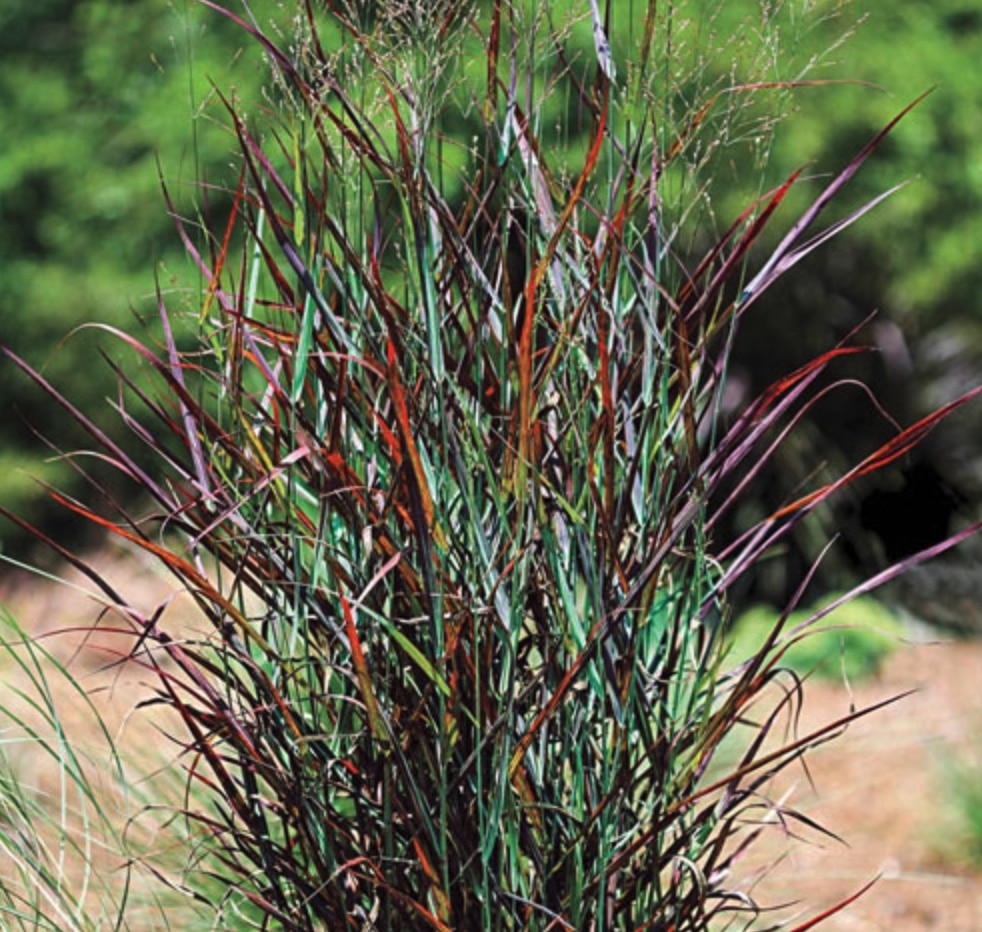Switchgrass is a perennial bunchgrass that was originally grown as cattle feed and is now commonly used as an ornamental grass in yards across America. Hot rod switch grass is a prairie grass native to the Northern states and can be grown in USDA zone 3 to 9.
The plant is a warm-season grass that will grow again every year, so you do not have to replant each spring. But did you also know there are over 100 species of switchgrass? Some species of switchgrass can grow up to 6 feet tall, and others remain under 1 foot. Some of the most common switchgrass plants are red, prairie, and Alamo varieties. Let’s look at how to grow and care for Hot Rod Switch Grass.
What is Hot Rod Switch Grass?

Hot Rod Switch Grass is so-called because of its rapid growth rate and deep red color. The ornamental grass is leggy and can grow to four feet in height with a spread of 3 to 4 feet. The plant has lovely blue-green foliage that has red edges and stems. In the fall, the plant darkens, becoming burgundy to purple.
Hot Rod switchgrass has the botanical name Panicum virgatum and is a hardy plant. These plants produce red flowers in the summer and have dark red seed heads that last well into the fall and winter. If well cared for, hot rod switchgrass can live up to 15 years.
Hot Rod Switchgrass Care Guide
Hot Rod Switchgrass has similar soil, water, and sun requirements as other varieties of switchgrass. Because Hot Rod Switchgrass is explicitly grown in the United States, there are many uses for this perennial grass. This ornamental grass is often used for landscaping, creating a windbreak to protect crops and pastureland, or erosion control. It can also be used as a ground cover for wildlife habitats, for decorative purposes, bee farms, and controlling gully erosion.
One big difference with this type of switchgrass is it can also handle colder climates than most other varieties. Here are some tips to help you grow and care for Hot Rod Switch Grass:
Watering Requirements
Hot Rod Switchgrass is fairly drought resistant but prefers to grow in moist soils and should be watered regularly. In most places, the rain will adequately water switchgrass for much of the year. It can be watered as much as 4 inches a week. If you don’t have any rain, you will need to water your plants. Ensure the pot does not have standing water for long periods of time, or it can cause root rot and kill your plant.
Sunlight Needs
Full sun is best for red hot switchgrass as it requires between 6 and 8 hours of direct sunlight per day. These plants can also cope with partial shade. If your plant begins to thin out, most likely, it is getting too much shade. Move it into a sunnier area, so the grass has ample room for full growth.
Soil
Hot Rod Switch Grass likes soil that stays consistently moist. This type of switchgrass generally does not like dry soil and does best in clay-like or sandy soils. If you keep your switchgrass in a pot, ensure the pot has adequate drainage holes to prevent root rot. There is no recommended pH range for this plant as its very versatile and does well in acidic, neutral, and alkaline soils.
Temperature
One thing to note is Hot Rod Switchgrass does not like extreme heat. This type of grass prefers cooler temperatures that range from 68 to 86 Fahrenheit.
Pruning
Cut back any dead or dying parts of the switchgrass in the winter before new growth appears in the spring. This will keep your plant growing well and give your switchgrass a nice shape. If you don’t prune the grass, it can grow really tall and become top-heavy, which could cause it to topple over!
Propagation
Hot Rod Switch Grass can be propagated through seeds, stem cuttings, or rhizome separation. You can divide your switchgrass every 3 to 5 years to grow more plants. When grown in a pot, division will help the plant grow larger and give it more room for flowers and roots.
Conclusion
If you live in a place that has cold winters and hot summers, Hot Rod Switch Grass is perfect for your landscaping. This type of grass is fast growing and will add color and texture to your yard throughout the year.
Because it can handle colder climates than most other varieties, this grass will survive harsh winter months and thrive during the spring and summer.
